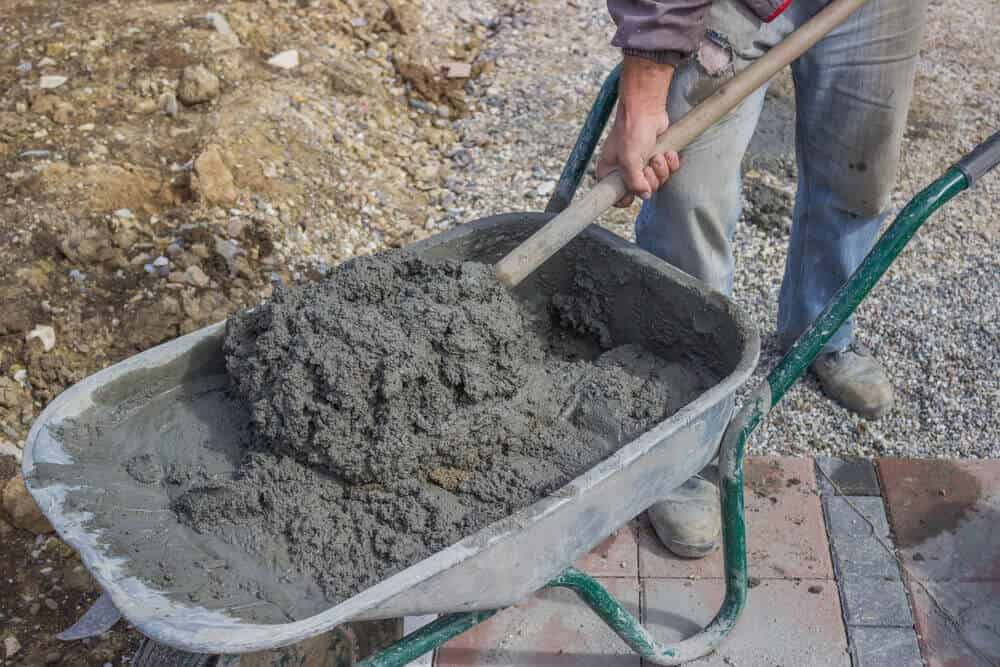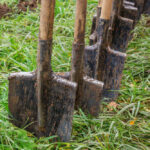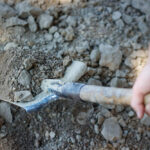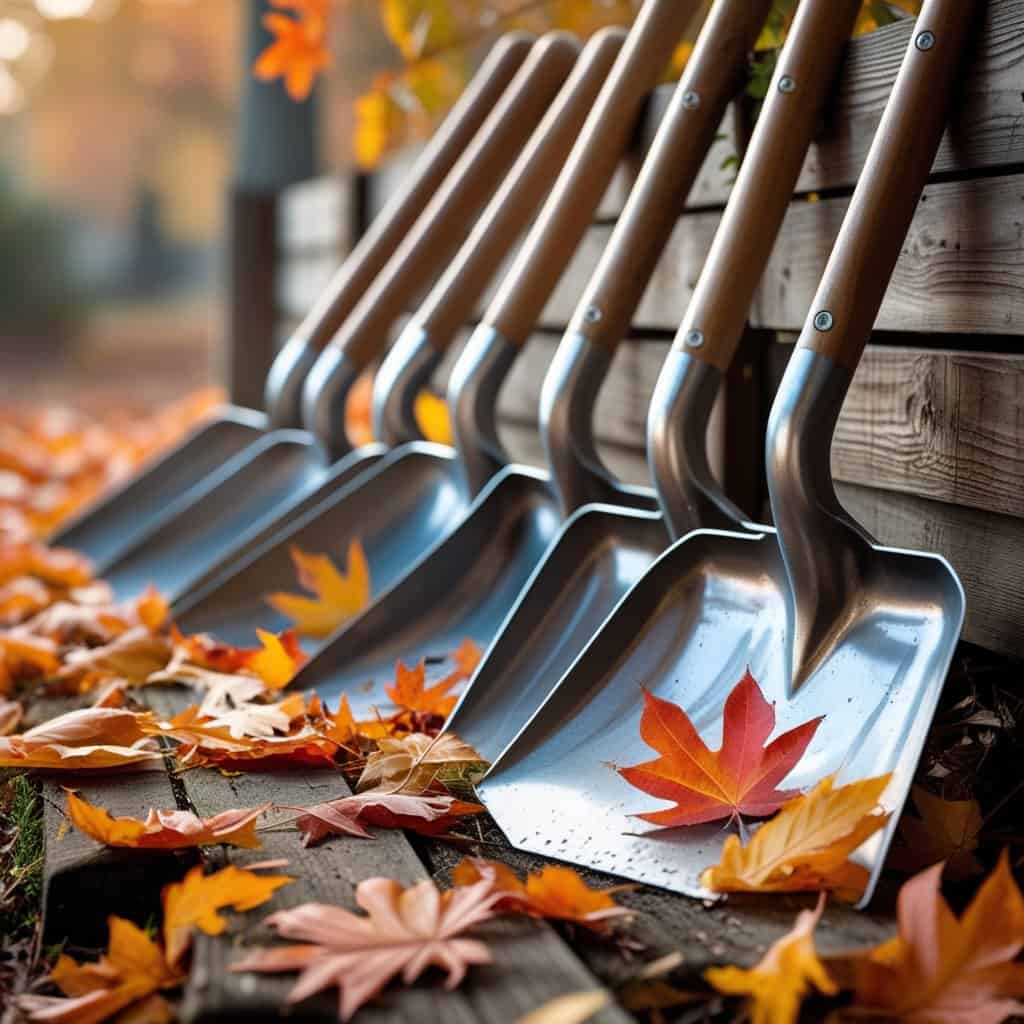Shovel choices for mixing concrete come in different sizes to suit your needs and preferences, but the best shovel for mixing concrete has a wide and flat metal blade that can efficiently scoop and mix concrete ingredients without denting or warping from the weight of the material.
Table of Contents
Types of Shovels for Mixing Concrete
The best shovels for mixing concrete are square or round point shovels and scoop shovels. The round point shovel has a rounded blade that is better for mixing smaller quantities of concrete. While this type of shovel does not have the same capacity as the square point shovel, its curved blade allows for efficient mixing since it can reach narrow areas and corners of the material for smaller projects or those requiring precision.
A square point shovel is the go-to for mixing concrete for larger projects. This type of shovel has an angled blade that helps scoop large amounts, making it easier to manage during mixing, and its sturdy construction allows it to handle heavier materials than other types of shovels.
Lastly, there is the scoop shovel for mixing concrete. This shovel has a broad bowl-shaped head, making it ideal for quickly scooping up large amounts of material to place together to make concrete, but there are better shovels for mixing concrete.
If you regularly mix concrete, you may also want to invest in a mixing or mason hoe designed explicitly for mixing concrete. The mason hoe has a flat, rectangular blade attached to a long handle, making mixing concrete in a wheelbarrow or other container easier. Other alternatives are the drill bit mixer or a concrete mixer depending on the amount of concrete you are making.
Handles and grips are also essential when selecting a shovel for mixing concrete. Most shovels are fitted with a D or T grip handle to provide better control and comfort, especially when working with heavy materials. However, the handle length of the shovel can affect the ease of mixing concrete, and your height can also play a role. Here are some pros and cons to consider:
Pros of a longer handle:
- It provides more leverage, making it easier to mix larger batches of concrete
- Reduces the amount of bending required, which can reduce strain on the back muscles
- It can be more comfortable for taller individuals
Cons of a longer handle:
- It can make the shovel heavier and more difficult to maneuver
- It may be too long for shorter individuals, making it more difficult to control
Pros of a shorter handle:
- It provides better stability when transferring the load
- It can be more comfortable for shorter individuals
Cons of a shorter handle:
- Requires more bending, which can increase strain on the back muscles
- It may not provide enough leverage for mixing larger batches of concrete
When selecting a shovel for mixing concrete, your usage, occasionally or every day, then consider the size and shape of the blade, the strength of the handle, and grip.
- Square-point shovels are best suited for larger projects.
- Round-mouth shovels help with precision mixing.
- Scoop shovels can quickly move large volumes of materials.
Shovel Choices For Mixing Concrete Recommendations
Truper 31198 Tru Pro Round Point Shovel
This shovel is designed for heavy-duty use and the 14 gauge steel blade is incredibly tough. The reinforced resin insert in the handle provides 400-pound of handle strength and handle stays cool out in the sun, unlike shovels with steel handles that get hot and uncomfortable to hold.
The Jackson 1250300 J-450 Pony Square Point shovel has a longer or shorter handle to choose from and is heavier than most square point shovels but built to last. It is ideal for mixing concrete and other tough jobs. Customers appreciate its strength and durability.
Steps To Mix Concrete With A Shovel
Mixing concrete with a shovel begins by determining the amount of concrete needed. To do this, measure the length, width, and depth of the area where you pour concrete to determine the required amount, then:
- Gather supplies – You will need cement, sand, gravel or crushed stone, water, a mixing container, and a cement mixing tool such as a shovel or hoe.
- Mix dry ingredients – Combine the cement, sand, gravel, or crushed stone in the mixing container.
- Gradually add water – Create a divet in the center of the material andg radually add water to the dry ingredients while mixing with a shovel. Turn the mix over and over blending it together with the water. Keep the mixture moving and scrape the edges often to ensure full mixture.
- Mix thoroughly – Continue mixing until all the dry ingredients are wet and the mixture is uniform.
- Check consistency – The concrete should be moist enough to pour but not too wet so that it will not hold its shape.
- Pour the concrete – Pour the concrete into the desired area and smooth it out with a trowel or float.
- Allow to cure – Allow the concrete to cure for at least 24-48 hours before walking on it or applying any weight.
- Clean up your containers and shovel- Our guide How To Clean A Shovel will walk you through the best methods.
Final Thoughts
When selecting a shovel for mixing concrete, consider the size and shape of the blade, strength of the handle, and grip. These tools will make mixing and handling concrete easier, saving time, effort, and energy.








